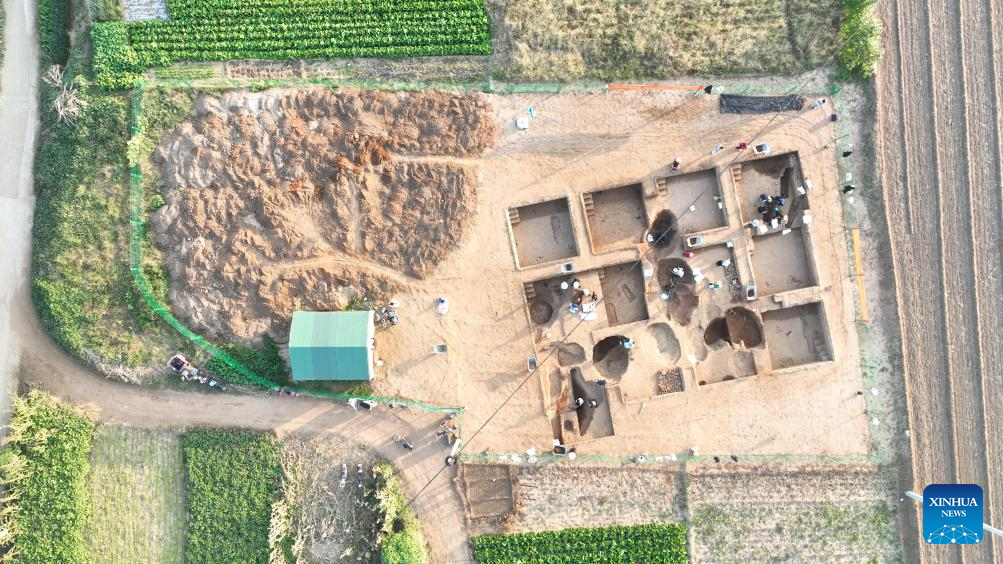


An aerial drone photo taken on Oct. 10, 2024 shows a view of Nanpanshi relic site in Lincheng County of north China's Hebei Province. A Neolithic human settlement site dating back approximately 6,000 years was found in north China's Hebei Province, offering fresh evidence for archaeologists to have a deeper understanding of the cultural development and changes in the early Neolithic Age of China. (Photo by Chen Lei/Xinhua)
SHIJIAZHUANG, Oct. 16 (Xinhua) -- A Neolithic human settlement site dating back approximately 6,000 years was found in north China's Hebei Province, offering fresh evidence for archaeologists to have a deeper understanding of the cultural development and changes in the early Neolithic Age of China.
The Nanpanshi relic site is located in Hebei's Lincheng County and its excavation began in August. Archaeologists from the Hebei Normal University, Hebei Provincial Institute of Cultural Relics and Archaeology as well as local authorities in charge of cultural relics protection have excavated about 300 square meters of the site, with the fieldwork expected to be completed by the end of October.
Bone wares, pottery and stone tools have been unearthed from the site, along with house foundations, tombs, urn burial sites and ash pits, according to He Xiangdong, a postgraduate student at the College of History and Culture at Hebei Normal University.
Suo Lixia, from the Lincheng cultural relics protection and management authority, explained that during the Neolithic period, urn burials were used for children who had died young, with their bodies placed in covered pottery vessels and buried near houses or indoors.
"The relics may offer insights into the living conditions and productivity of people from that time," said Liu Zhenhua, an official in charge of culture and tourism in Lincheng, adding that plans are underway to develop an archaeological relics park at the site. ■
点击右上角![]() 微信好友
微信好友
 朋友圈
朋友圈

请使用浏览器分享功能进行分享
